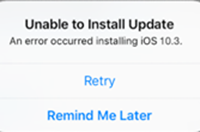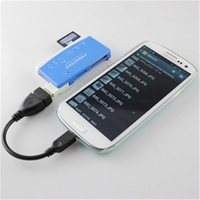Android Data Recovery
Has your ISP ticked you off for the last time? Have you been thinking about switching providers? Not quite sure where to start? Don't worry. We're here for you. Change is an unsettling process. There are many highs and lows to it. One of the most frustrating things about the transition is having to find the right alternative and filling the empty slot in your life with the perfect champion. As of now, there are more than 2500 internet providers thriving across the US. Some stand out in the cities, while others shine in the rural areas. Depending on where you live, you might have more than one internet service options available to you, and if you're a sucker for broadband, then the following guide will help you find an ideal broadband connection in your area.
What You Need To Know About Different Broadband Network Types
Information is power, and the more know-how you have about various types of internet connections raging in the telecom market, the better you'll be able to choose one for yourself. Let's begin by defining broadband. Broadband is an umbrella term which is often used to denote all those internet connections that have a relatively 'higher-speed' of bandwidth delivery and an 'always-on' capability, in contrast to dial-up (which trumps your phone calls for powering your web access). So, answering your "which is the top isp in my area?" question, we have categorized the available broadband providers by their network types below, so you can see what they offer before sealing the deal.
DSL Broadband
DSL or Digital Subscriber Line is a broadband connection that carries internet signals over the telephone line (like dial-up) to your home and supports up to 25 Mbps speeds. There are two kinds of DSL connections available in the market, if you like to get technical. The first is as an Asymmetric DSL line (ADSL), which offers uneven download (faster) and upload (slower) speeds. The second is a Symmetrical DSL line (SDSL), which delivers equal upload and download speeds to people backing up a large size of data to the cloud on a daily basis. DSL broadband has a number of merits and demerits:
Merits
-Greater geographical coverage.
-Less expensive than other broadband types.
-Stable & consistent speeds.
-More ISP choices for the consumers.
Demerits
- Speeds dependent on the distance from the provider's central office
- Limited top-end speeds in contrast to other broadband types
That said, there are more than 880 DSL providers serving across the nation, with some of the best ones being:
Cable Broadband
Cable internet is a type of broadband connection which carries network signals over the coaxial line (the same one that delivers television to your home) and supports up to 100 Mbps average speeds. It has the following attributes:
Merits
-Consistency & stability of network connection
-Faster than DSL & satellite
-Speeds not dependent on the distance from the provider’s central office
-Wider availability than fiber optic
Demerits
-Shared bandwidth with the neighborhood results in occasional speed drops
-Limited upload speeds
Now that we're familiar with the pros and cons of cable broadband, let's learn about the providers who have the most coverage across the US, cable wise:
Fiber Broadband
Fiber optic network is the latest type of broadband connection that carries internet signals in the form of light pulses through wires that are made of pure glass and are as thin as human hair. Given the advanced nature of this technology, fiber's merits somehow supersedes its demerits:
Merits
-Highest speeds in the market up to 1000 Mbps
-Equally fast upload and download speeds
-100% bandwidth delivery
Demerits
-Limited availability
Since fiber broadband is not available in as many areas as its copper wire contemporaries, so its top providers include:
Satellite Broadband
Satellite internet principally works when the provider's orbiting transmitters send network signals to the subscribers' installed dishes on the ground. It has progressed enough to support broadband speeds of 25 Mbps and above. Its attributes can be characterized as:
Merits
-Ideal for rural area residents who cannot access DSL, cable and fiber-optic connections
-Consistent coverage across the nation
-Quick customer support
-Saves costs on wired infrastructure
Demerits
-Subject to weather interferences and occasional signal drops
-Throttled by provider-controlled data caps
-Dish gives an unseemly look to the face of the house
Mainly, there are two satellite internet providers that deliver bandwidth to the US population:
Wrapping Up
So, now that you have gone through the aforementioned broadband connections available in the market and their corresponding top providers, you can easily figure out the type and the ISP that you’d like to subscribe to in your area without much hassle.
























